
How to Use TDS SENSOR: Examples, Pinouts, and Specs
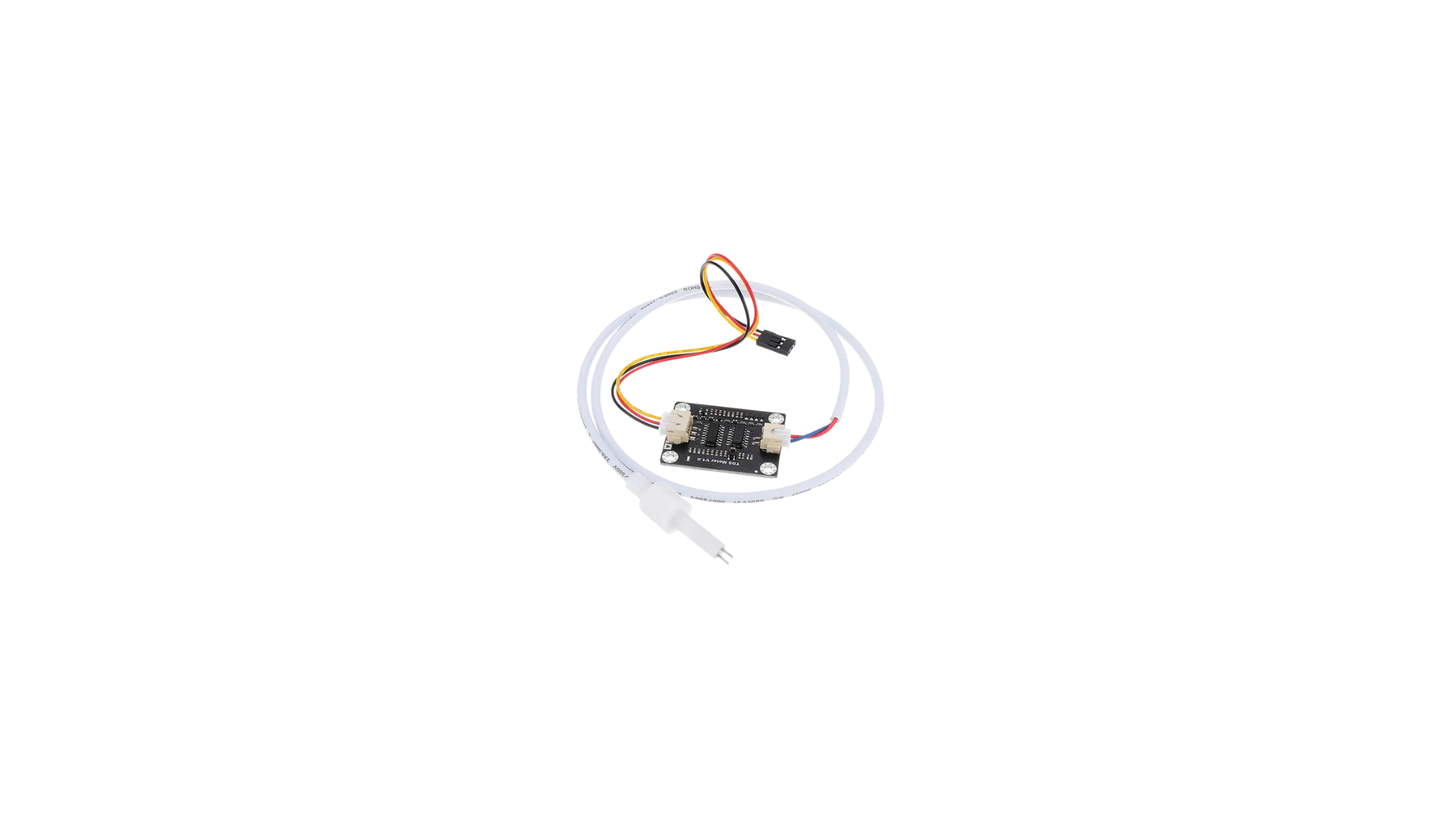
 Design with TDS SENSOR in Cirkit Designer
Design with TDS SENSOR in Cirkit DesignerIntroduction
A TDS (Total Dissolved Solids) sensor measures the concentration of dissolved solids in water, providing an indication of water quality and purity. It is widely used in applications such as water filtration systems, aquariums, hydroponics, and environmental monitoring. By detecting the electrical conductivity of water, the sensor estimates the total dissolved solids, which is typically expressed in parts per million (ppm).
Common applications and use cases:
- Monitoring water quality in drinking water systems
- Ensuring proper nutrient levels in hydroponic farming
- Testing water purity in aquariums
- Environmental water testing for rivers, lakes, and reservoirs
Explore Projects Built with TDS SENSOR
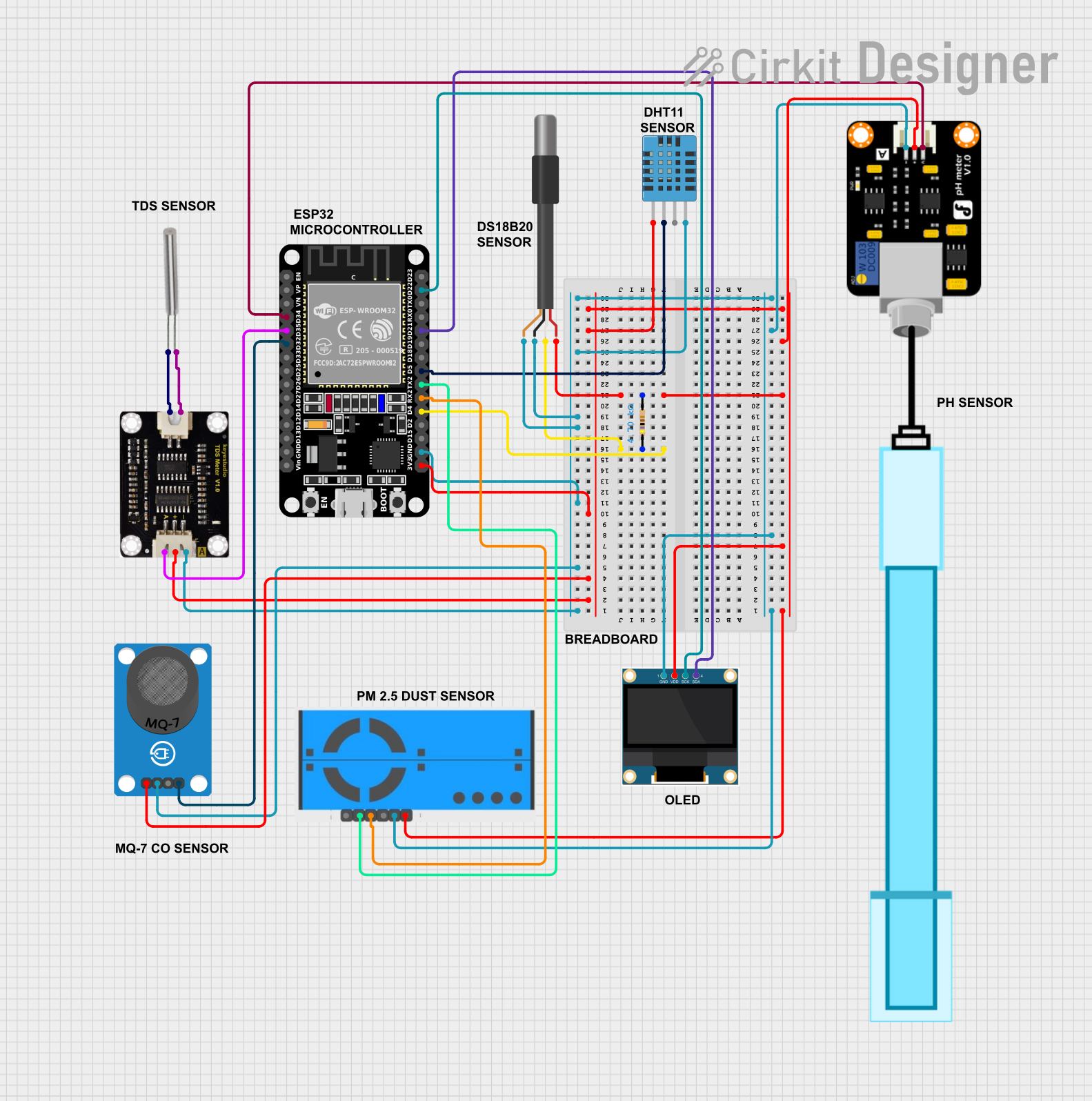
 Open Project in Cirkit Designer
Open Project in Cirkit Designer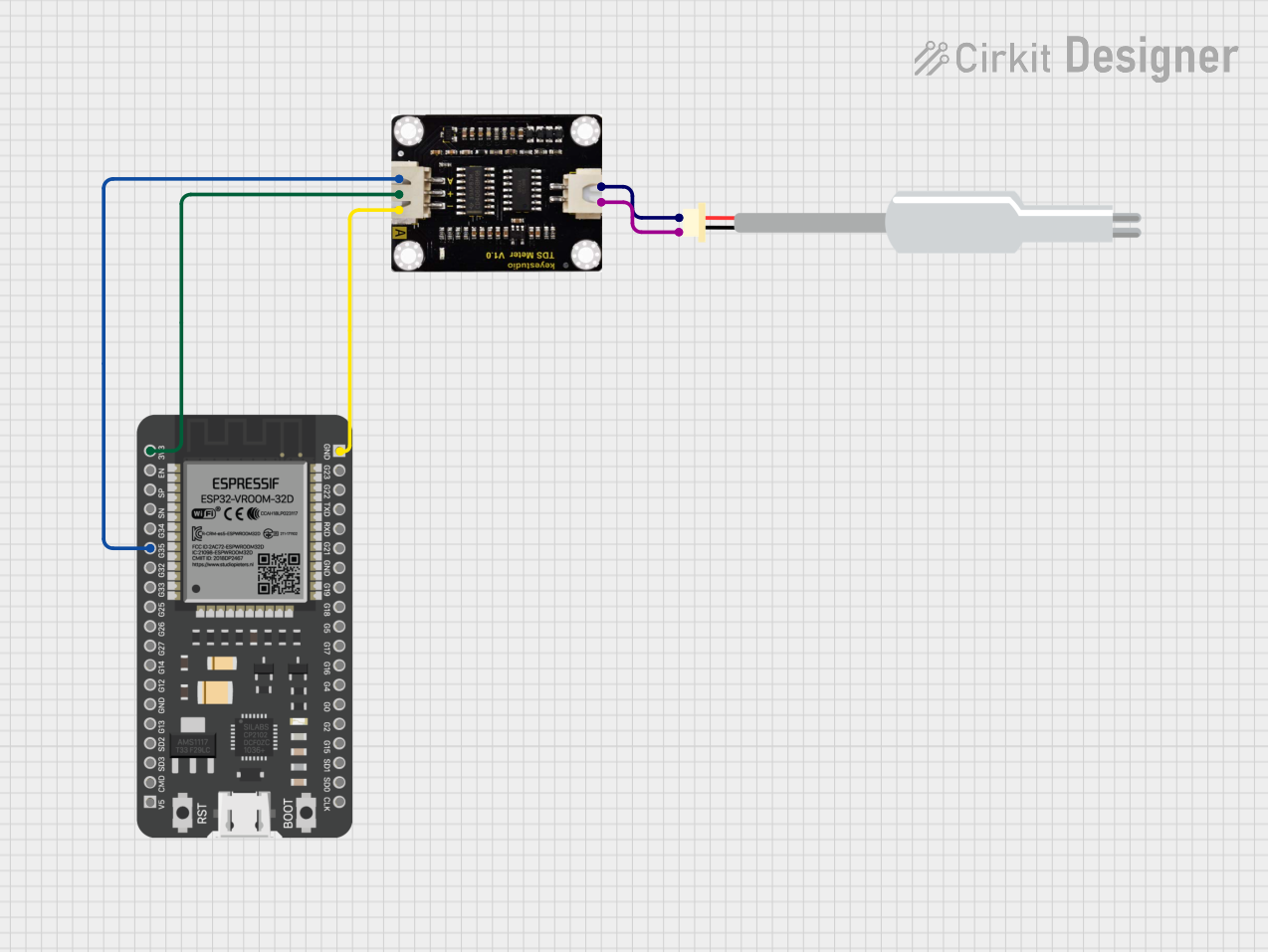
 Open Project in Cirkit Designer
Open Project in Cirkit Designer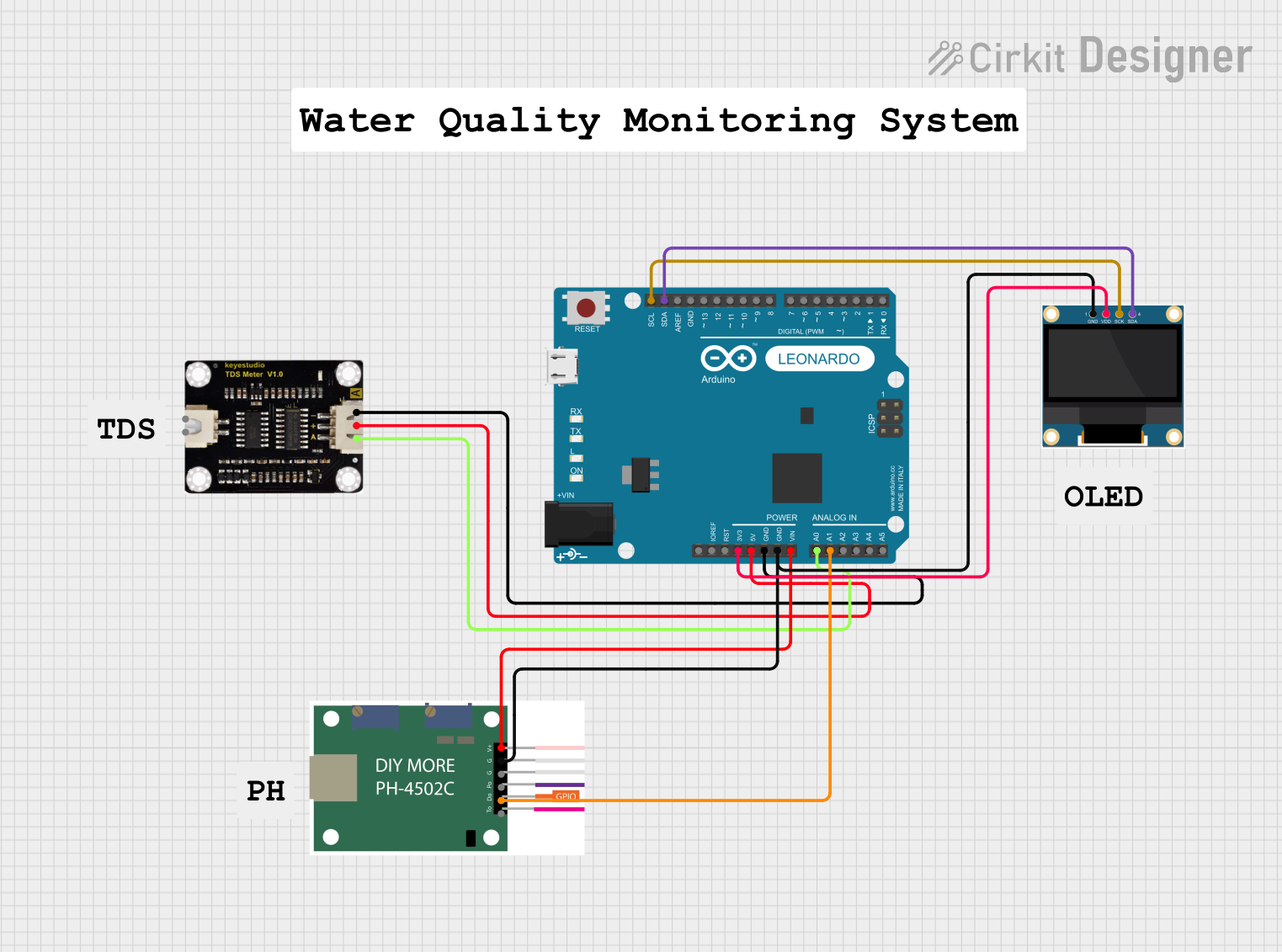
 Open Project in Cirkit Designer
Open Project in Cirkit Designer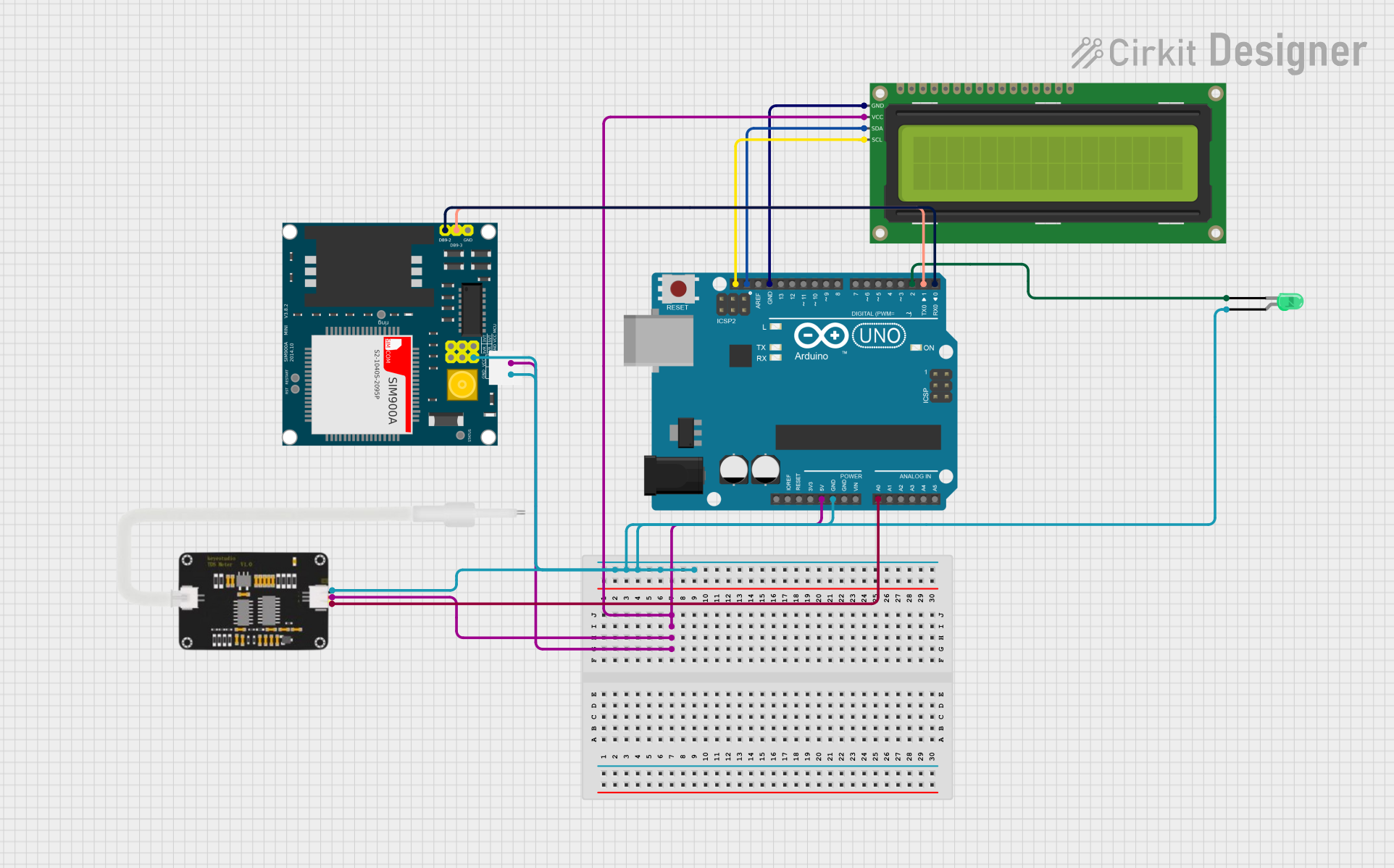
 Open Project in Cirkit Designer
Open Project in Cirkit DesignerExplore Projects Built with TDS SENSOR

 Open Project in Cirkit Designer
Open Project in Cirkit Designer
 Open Project in Cirkit Designer
Open Project in Cirkit Designer
 Open Project in Cirkit Designer
Open Project in Cirkit Designer
 Open Project in Cirkit Designer
Open Project in Cirkit DesignerTechnical Specifications
- Operating Voltage: 3.3V to 5V DC
- Output Signal: Analog voltage (0-2.3V)
- Measurement Range: 0 to 1000 ppm (standard version)
- Accuracy: ±10% of the reading
- Temperature Range: 0°C to 60°C
- Probe Material: Stainless steel
- Cable Length: Typically 1 meter (varies by model)
Pin Configuration and Descriptions
The TDS sensor module typically has three pins for connection:
| Pin Name | Description |
|---|---|
| VCC | Power supply input (3.3V to 5V DC) |
| GND | Ground connection |
| AOUT | Analog output signal (0-2.3V range) |
Usage Instructions
How to Use the TDS Sensor in a Circuit
Connect the Sensor:
- Connect the
VCCpin to the 5V or 3.3V power supply of your microcontroller. - Connect the
GNDpin to the ground of your microcontroller. - Connect the
AOUTpin to an analog input pin on your microcontroller (e.g., A0 on an Arduino UNO).
- Connect the
Calibrate the Sensor:
- Use a known TDS solution (e.g., 342 ppm calibration solution) to calibrate the sensor.
- Adjust the potentiometer on the module to match the expected output voltage for the calibration solution.
Write Code to Read the Sensor:
- Use an analog-to-digital converter (ADC) to read the sensor's output voltage.
- Convert the voltage reading to a TDS value using the formula provided in the sensor's datasheet.
Important Considerations and Best Practices
- Temperature Compensation: TDS readings are affected by water temperature. Use a temperature sensor for compensation if high accuracy is required.
- Avoid Corrosion: Do not leave the probe submerged in water for extended periods to prevent corrosion.
- Clean the Probe: Rinse the probe with distilled water after each use to maintain accuracy.
- Avoid High Voltage: Ensure the sensor operates within its specified voltage range to prevent damage.
Example Code for Arduino UNO
// TDS Sensor Example Code for Arduino UNO
// This code reads the analog output of the TDS sensor and calculates the TDS value.
#define TDS_PIN A0 // Analog pin connected to the TDS sensor's AOUT pin
#define VREF 5.0 // Reference voltage of the Arduino (5V for UNO)
#define ADC_RES 1024.0 // ADC resolution (10-bit ADC = 1024 steps)
void setup() {
Serial.begin(9600); // Initialize serial communication
pinMode(TDS_PIN, INPUT); // Set the TDS pin as input
}
void loop() {
int sensorValue = analogRead(TDS_PIN); // Read the analog value from the sensor
float voltage = (sensorValue / ADC_RES) * VREF; // Convert ADC value to voltage
float tdsValue = (voltage / 2.3) * 1000; // Convert voltage to TDS (ppm)
// Print the TDS value to the Serial Monitor
Serial.print("TDS Value: ");
Serial.print(tdsValue);
Serial.println(" ppm");
delay(1000); // Wait for 1 second before the next reading
}
Troubleshooting and FAQs
Common Issues and Solutions
Inaccurate Readings:
- Cause: The sensor is not calibrated.
- Solution: Calibrate the sensor using a known TDS solution and adjust the potentiometer.
No Output or Constant Value:
- Cause: Incorrect wiring or damaged sensor.
- Solution: Verify the connections and ensure the sensor is powered correctly. Replace the sensor if necessary.
Fluctuating Readings:
- Cause: Electrical noise or unstable power supply.
- Solution: Use a capacitor across the power supply pins to filter noise. Ensure a stable power source.
Corroded Probe:
- Cause: Prolonged exposure to water.
- Solution: Clean the probe with distilled water and avoid long-term submersion.
FAQs
Q: Can the TDS sensor measure salt concentration?
A: Indirectly, yes. The TDS sensor measures electrical conductivity, which is influenced by dissolved salts. However, it does not differentiate between specific dissolved solids.
Q: Is the TDS sensor waterproof?
A: The probe is waterproof, but the module is not. Ensure the module is kept dry during operation.
Q: Can I use the TDS sensor in hot water?
A: The sensor is rated for temperatures up to 60°C. Avoid using it in water above this temperature to prevent damage.
Q: How often should I calibrate the sensor?
A: Calibration frequency depends on usage. For critical applications, calibrate before each use. For general use, calibrate monthly or as needed.